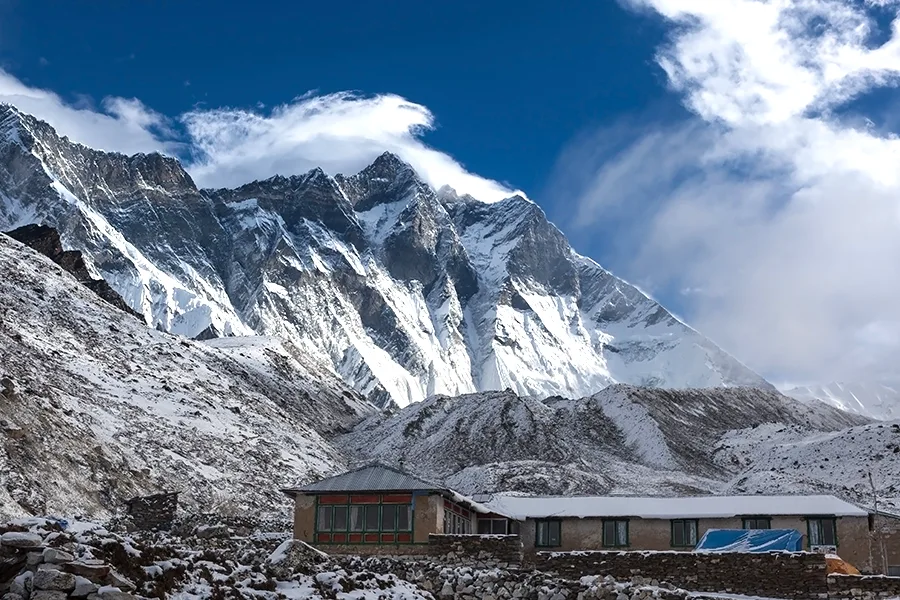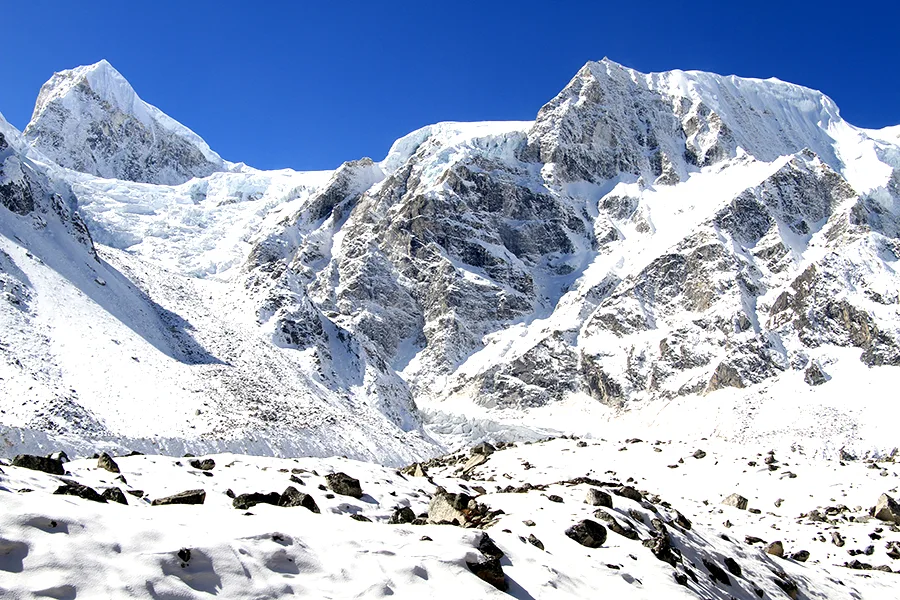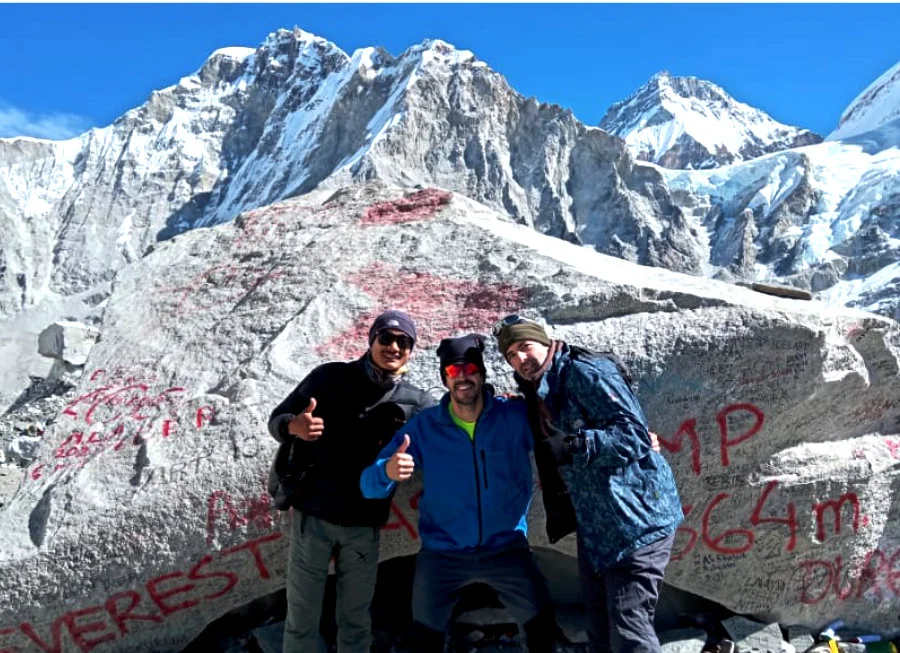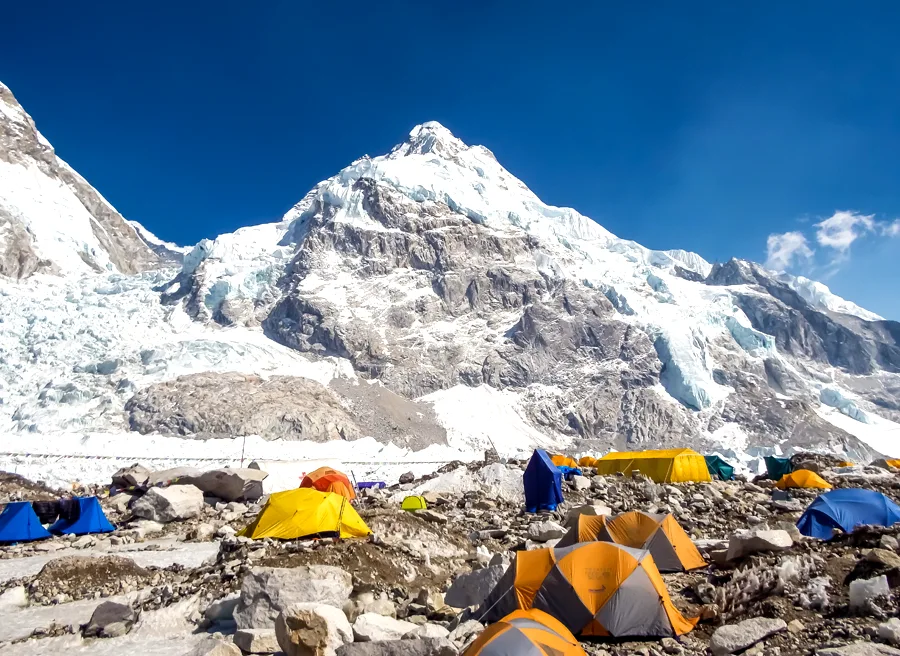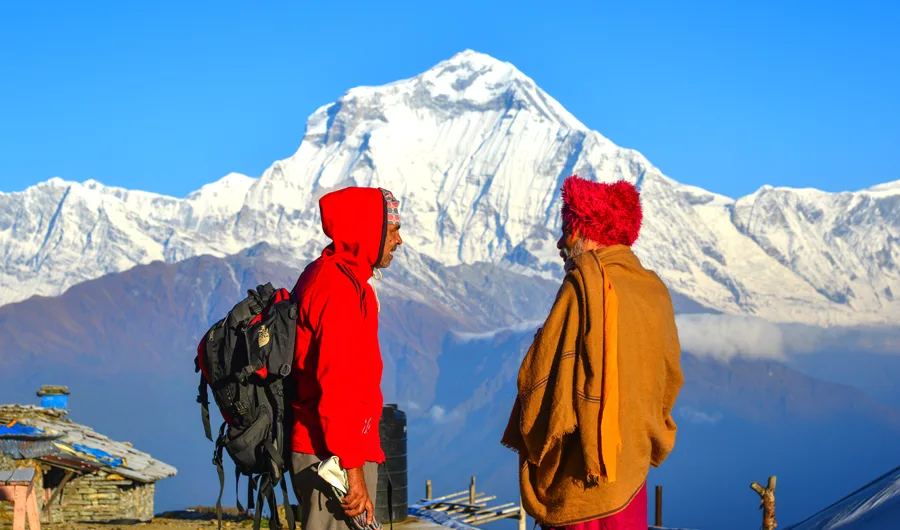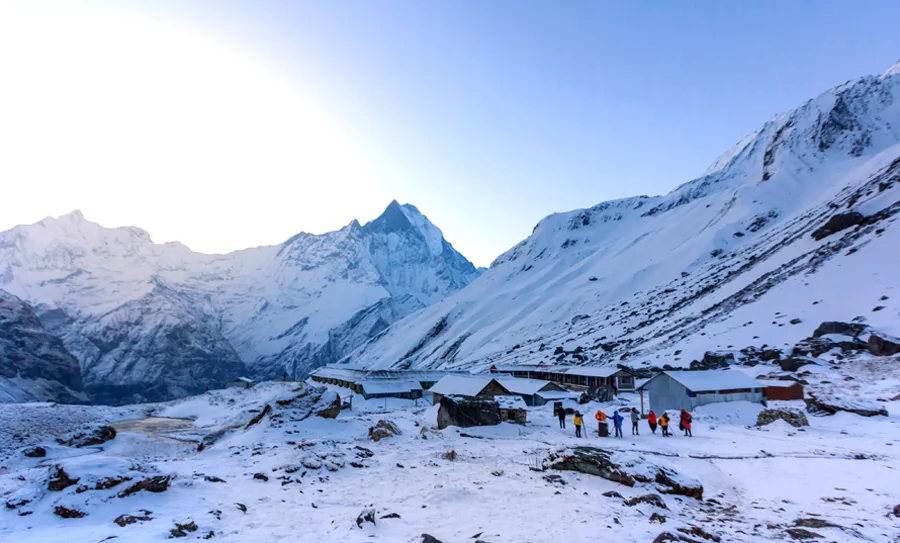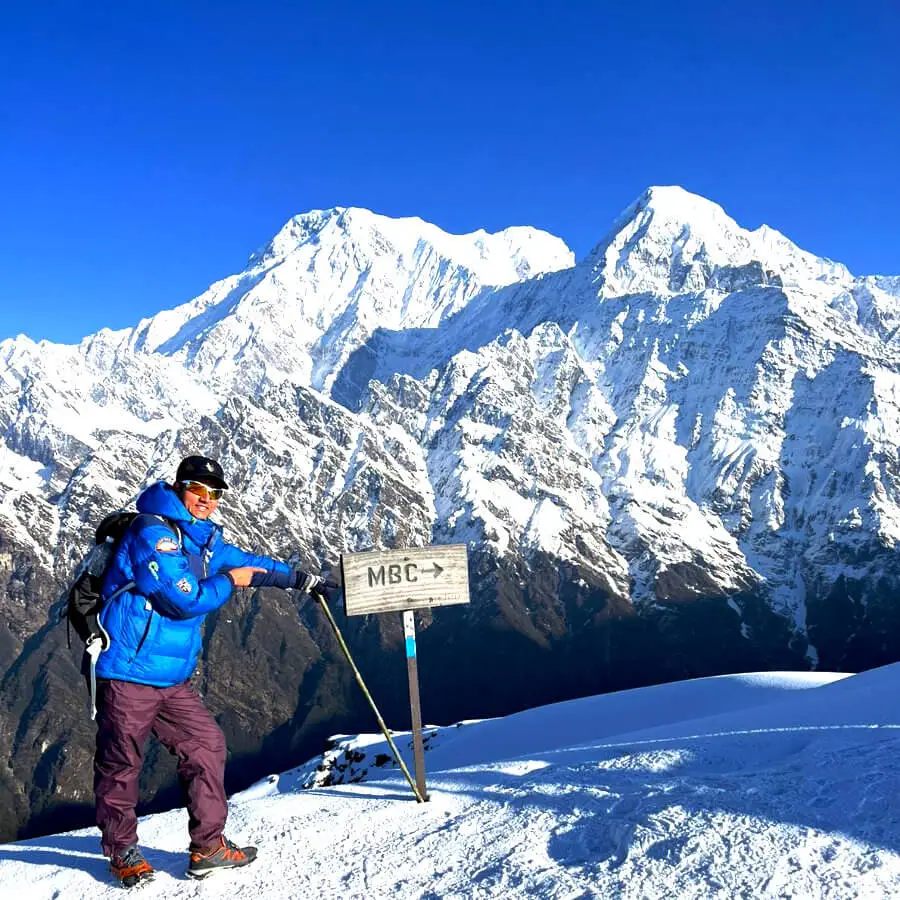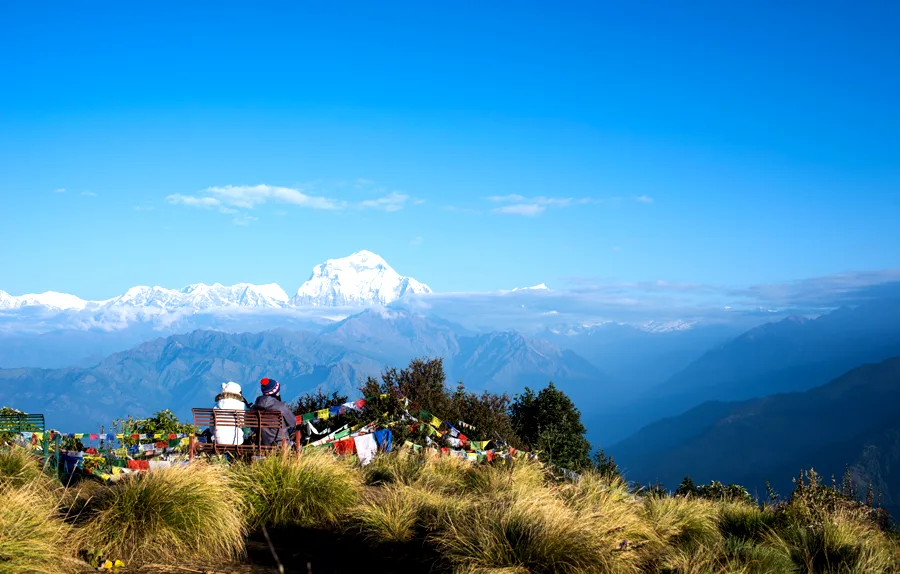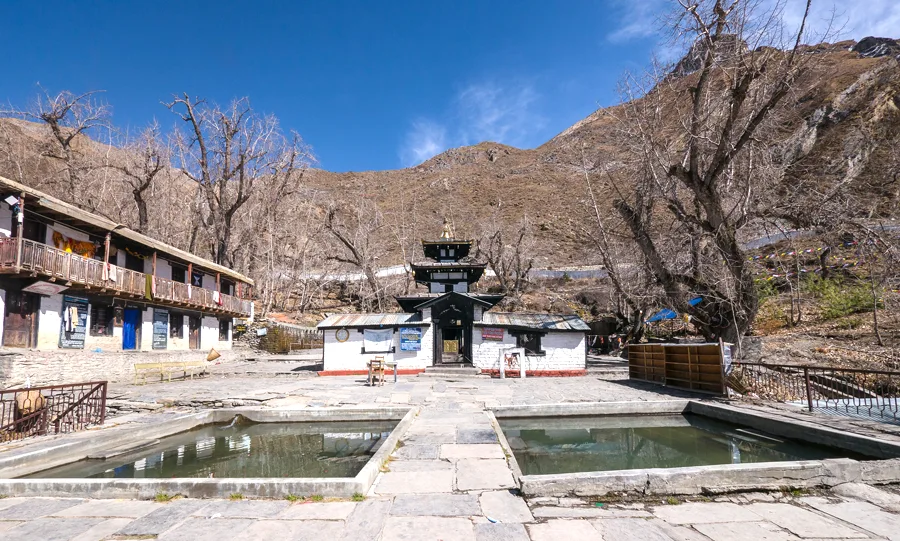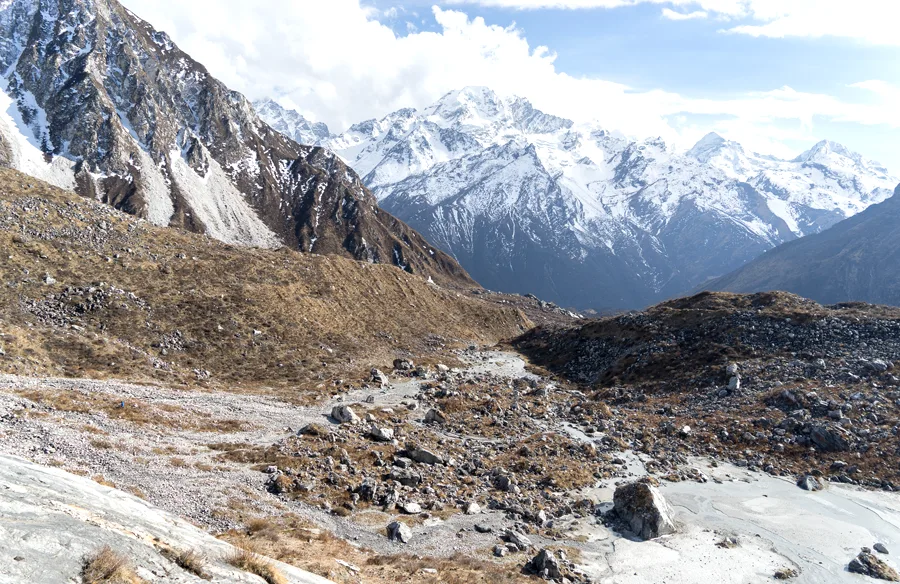Want to know about the factors affecting the Everest Base Camp Trek Difficulty? The hike to Everest Base Camp is famous for being challenging but notable. Everest Base Camp is within the Himalayas and gives you stunning scenery and a chance to revel in remarkable cultures.
But it is not an easy chore – you must be strong enough to encounter the high-altitude, hard terrain, and changing climate that comes with Everest Base Camp Trek Difficulty. Everest Base Camp is the place wherein hikers start their adventure to Mount Everest, the most challenging trek on this planet, it is approximately 5,364 meters (17,598 feet) high. But reaching there’s not too easy.
The trek starts in Lukla, a busy city. From there, trekkers face steep climbs and descents on narrow paths. Every day Everest Base Camp Hike Difficulty brings new challenges like walking on rocky trails, crossing bridges over fast-flowing rivers, and being used to the thin air as you climb up.
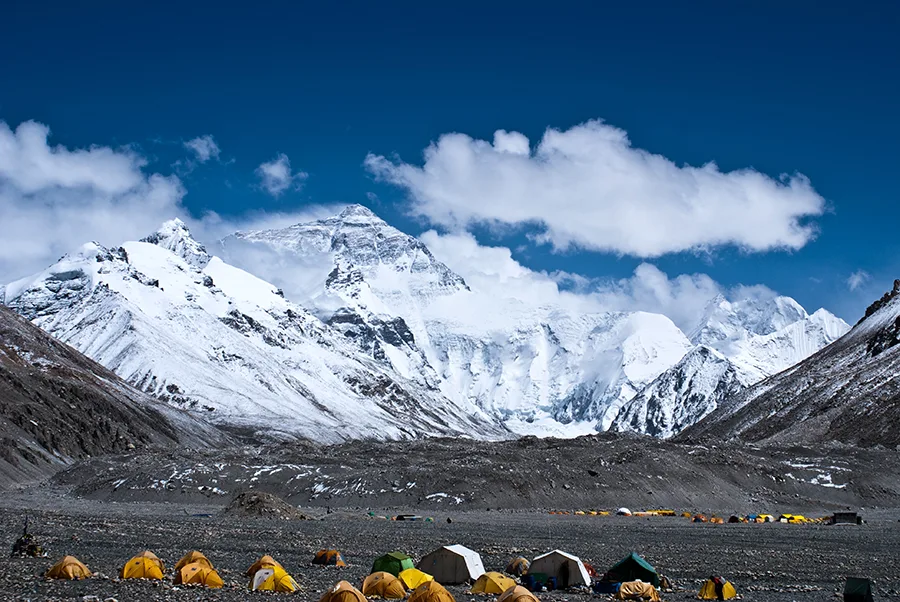
The Everest Base Camp Trek Difficulty is tough specifically because of the high altitude. As you climb up into the Himalayas, the air becomes thinner, which can make you feel ill and really tired. The weather at some point in the trek makes things even tougher.
Acute Mountain Sickness (AMS) is a kind of sickness in which your physique finds it difficult to get used to the reduced oxygen as you move up high. To get used to this, you need to go slowly, take long breaks often, and give your body time to regulate the altitude.
In the Himalayas, the weather can change suddenly and be hard. It can pass from very hot to cold in no time. Trekkers may have to go through snowstorms, sturdy winds, and terrific cold temperatures, mainly in spring and autumn. Walking on icy paths makes the adventure even more difficult.
The Khumbu area wherein you trek may be very remote. Places available to stay are tea houses and accommodations without things like heating accessories or hot water. All of the elements have to be carried in by way of porters or animals, which makes the trek even more difficult to organize.
Every part of the adventure, from walking on dangerous paths to handling the unpredicted climate and feeling ill from the high altitude, is a massive venture. But for those who are up for this big journey, it’s not very complicated to deal with Everest Base Camp Trek Difficulty.
Everest Base Camp Trek Difficulty factors: Get ready for the challenges
The Everest Base Camp (EBC) trek is famous and popular among trekking enthusiasts everywhere. It is about 80 miles [130 km] long from Lukla. This walk offers charming scenery, opportunities to learn about different cultures, and a sense of achievement. But it’s hard, so it’s important to understand about Everest Base Camp Trek Difficulty.
First, there are a lot of Everest Base Camp Trek Difficulty factors. You need to have good physique to cover long distances and steep roads. Mental Strength is also key as it can be difficult and exhausting. In addition, everything from packaging and accommodation needs to be carefully planned.
Overall, although the EBC Trek is impressive, it is not easy. It takes energy, determination, and careful preparation to overcome Everest Base Camp Trek Difficulty.
1. Altitude:
One of the toughest Everest Base Camp Trek Difficulty is the altitude. As you climb higher in the Himalayas, the air becomes thinner, indicating a lack of fresh air. This can cause complications, nausea, dizziness, and fatigue. These high-altitude effects are difficult to control and require careful control and stabilization.
2. Acclimatization:
Your body must get used to the altitude without getting sick and enjoying trekking. To do this, you need to follow a smart schedule with rest days at certain altitudes. These breaks give your body time to adjust to lower oxygen levels. They help your body produce more red blood cells and get used to the altitude, so you’re less likely to feel sick.
3. Weather:
The weather around Everest may be virtually unpredictable. It can change swiftly and be very different from one season to the next. Hikers should be organized for all forms of weather, along with the shiny sun, cold, high winds, and snow.
These unexpected changes can make walking difficult, affecting visibility, path satisfaction, and protection. So, it’s essential to carry the proper clothes and tools to keep prepared for any climate surprises.
4. Terrain:
The trail to Everest Base Camp covers an extensive form of terrain, from steep mountain trails to rocky terrain, steep and mountain trekkers require fitness, desirable stability, and versatility to deal with this challenging terrain.
The terrain can be uneven and threatening so you need to be focused to avoid harm. In addition, be organized for long days of hiking, now and then 6-8 hours or more, as you tour to and from Everest Base Camp.
5. Long distance:
The trek to Everest Base Camp is physically demanding and requires long walks. It is about 80 miles [130 km] long from Lukla. So, you need to spend several days walking and traveling, usually around 12-14 days, depending on your trail. Walking for a long time can tire you out, so it’s critical to preserve a smooth pace and preserve power throughout the journey.
6. Altitude Change:
As trekkers start their trek to Everest Base Camp, they climb considerably, and this drastic change in altitude from around 2,800 meters at Lukla to more than 5,300 meters at EBC can be stressful.
Your body has to go through a hard time tolerating different oxygen levels and gases. The farther you pass, the thinner the air becomes, indicating less oxygen. This can cause headaches, nausea, dizziness, and fatigue.
7. Accommodation:
You can find simple tea houses on the way to Everest Base Camp. These locations have basic facilities like shared rooms with special beds, bathrooms, and food served in communal regions and even though these lodges might not be so expensive, it give you the uncomfortableness to enjoy nearby subculture and hospitality.
So, get equipped for the basics and enjoy connecting with the nearby lifestyle.
8. Cleanliness and Hygiene:
In mountain regions like Everest, maintaining cleanliness and hygiene can be tough. You don’t constantly get clean water or bathrooms, particularly when you’re going up. Some teahouses may also have special washing centers, but you could use moist wipes or hand sanitizer rather. It is essential to keep your hands clean to save you from illnesses and gastrointestinal diseases.
9. Food and Water Safety:
When trekking to locations like Everest, it’s essential to be careful about what you consume and drink to avoid getting sick. In remote areas where toilets can be highly priced and clean water may be difficult to find, there’s a better risk of being sick from infected food and water.
Get facilitation of food and water from trusted sources, such as famous teahouse names. Be careful about what you eat and drink properly to reduce your risk of food poisoning.
10. Physical Fitness:
Your body needs to deal with the hard terrain and altitude for the trek to Everest Base Camp. The trip includes plenty of trekking over rocks, steep slopes, and slender trails over all forms of terrain. For this, you must have accurate cardiovascular fitness and enough stamina to keep your luggage and walk through tough terrain.
Flexibility and agility also help, in navigating rugged terrain and overcoming barriers. Preparing for a hike approach doing aerobic, power training, stretches, and other sporting activities that can help you encounter on a hike. In this way, you will be ready for the trek and you can enjoy it without feeling too tired.
11. Change in mindset:
Trekking to Everest Base Camp isn’t much about physical fitness; trekking also requires mental strength. Along the trail, you can experience fatigue, altitude illness, awful weather, or other issues. Being mentally strong helps you go through these tough times.
Setting goals, staying focused managing stress, and finding internal motivation can all help you overcome challenges. It also helps to have a supportive group or mentor to encourage you through the journey. Having mental strength is a big part of getting ready for a walk, so you’re ready to handle whatever comes your way.
12. Navigation:
The trail to Everest Base Camp is generally easy to navigate, but sometimes you have to navigate steep terrain or when the trail changes. It helps if you have basic map reading skills, so it’s best to know your way around with the help of a map or advanced GPS. Pay attention to signs, landmarks, and trail markings, and be prepared to adjust if trails change.
If you don’t know where to go, ask locals or different hikers for assistance. Being accurate at navigation and familiar with your surroundings offers you more self-belief and makes your trek less difficult.
13. Get Ready for Emergency:
When visiting Everest Base Camp, it’s important to be prepared for an emergency as access to clinical assistance won’t be easy to find. Bring necessities including first aid, ache comfort, materials for gastrointestinal problems, and primary first resource kits for accidents.
Knowing what to do in an emergency, including recognizing the signs of infection or first aid may be sincerely useful in difficult conditions also, if something awful takes place, plan on how to get help and go away fast, such as through a helicopter ride if needed.
Safety needs always come first, so take precautions to decrease the dangers and make sure your hike is secure and exciting.
14. Environmental Concern:
It is important to preserve the surroundings around Everest Base Camp from the terrible impacts of tourism. To try this, follow the Leave No Trace rule, because take all of your trash with you and putting off it nicely. Use reusable water bottles rather than single-use plastic to reduce the use of waste.
Respect flora and fauna by not getting too near them, or feeding them. By breaking the rules and minimizing impact, you make contributions to a healthier Himalayan ecosystem in the future.
Facing Everest Base Camp Trek Difficulty: Essential Tips for Success

Going on an Everest Base Camp (EBC) trek is full of fun and challenges! You will see admiring locations and feature unforgettable moments. But it’s also hard to trek. The air is thin and the road is hard. But don’t worry! With a little proper prep and a positive attitude, you can make it easy and have fun unlimited.
Here are a few easy success tips that will help you combat the Everest Base Camp Trek Difficulty:
1. Prepare your body:
It is important to prepare your body before the EBC trip. Do things like walking, running, or cycling to build endurance. Also, do muscle-strengthening sports, especially to reinforce the legs. This will help you deal with rugged roads and uneven terrain whilst trekking.
2. Get used to high altitudes:
Altitude sickness can be trouble while hiking at locations like Everest Base Camp. Go up slowly to avoid it. Don’t rush yourself. Sleep in areas lower than walking distance during the day. Take breaks to give your body time to get used to the thin air.
3. Stay hydrated and nourished:
It’s really important to stay hydrated and eat wholesome foods even while hiking. Drink lots of water to stay hydrated, and eat foods rich in carbs, protein, and healthy fat to stay energized. Eat such things as nuts, dried fruits, and other power-giving foods to keep you energized in the trek.
4. Pack wisely:
It is crucial to percent accurately whilst getting ready for a hike. Bring the simplest what you need, consisting of garments for varied climate situations, easy-to-carry bags, toiletries, and snacks. Make sure you have the right equipment, including robust hiking boots, a snug backpack, and a heating bag to keep you safe.
5. Don’t walk fast:
When you are on an EBC hike, it is not the trek to hurry. Relax and enjoy the local scenery and culture. Listen to your body, and go at a comfortable pace, especially when the walk is intense. Take breaks while you wish, so that you can effortlessly breathe and relax your muscle tissues.
6. Pay attention to altitude sickness:
Pay due attention to what you sense whilst you climb to higher altitudes. If you’ve got a headache, feeling unwell, or are worn out, altitude sickness can arise. If that happens, move to the lower area immediately. If you need help, talk to your mentor or other people. They can help you and make sure you are okay.
7. Have fun and be prepared for change:
Stay positive and be ready to change your plans if necessary. Sometimes weather or other problems arise during the trip. Focus on what you get to Everest Base Camp, but be open to any unexpected interests or surprises along the way.
Following these success tips and getting ready yourself physically and mentally will make Everest Base Camp hiking simpler and you will experience preventing Everest Base Camp Trek Difficulty.
Frequently Asked Questions
What’s the physical fitness level required for the Everest Base Camp trek?
The trek wishes a moderate to a high degree of physical health. Trekkers ought to be prepared for long walks, and uphill hikes, regularly at high altitudes. Regular cardiovascular sports and strength education can help prepare for serious conditions.
How hard is the altitude at some stage in the Everest Base Camp trek?
Altitude sickness is a serious problem because of the high elevation. Trekkers need to acclimatize nicely with the aid of climbing slowly and staying hydrated. Symptoms of altitude illness include dizziness, nausea, and fatigue. It’s essential to understand these signs and symptoms and descend if they get worse.
What’s the problem with the terrain at the Everest Base Camp route?
The terrain varies from rocky paths to steep ascents and descents, together with some hard sections with difficult and rugged trials. Trekkers should be used to trek on uneven terrain and be organized for change in climate situations.
Are there any technical mountain climbing skills required for the Everest Base Camp trek?
The trek itself does not require technical mountaineering skills, however, basic hiking skills are beneficial. However, a few sections may comprise crossing glaciers or navigating through icy terrain wherein the use of crampons and ropes may be essential.
What should I do to meet the physical demands of the Everest Base Camp trek?
Prioritize cardiovascular sporting activities like hiking, running, or biking to build patience. Additionally, include power training physical activities to reinforce leg muscle tissues. Practicing hiking with a loaded backpack also can simulate the situation of wearing equipment in the path of the trek. Lastly, intellectual training is crucial; keeping a focused mindset and determination can assist in dealing with Everest Base Camp Trek Difficulty.
The Final Wrap Up
However, hiking to Everest Base Camp is a tough and worthwhile trek that allows trekkers to attain their desires. From unpredictable heights and climate to hard terrain and distance, every Everest Base Camp Trek Difficulty offers a variety of demanding situations however with the right plans, training, and determination, trekkers can encounter these obstacles and experience the awe-inspiring beauty of the Himalayas on their trek to the Everest Base Camp.




